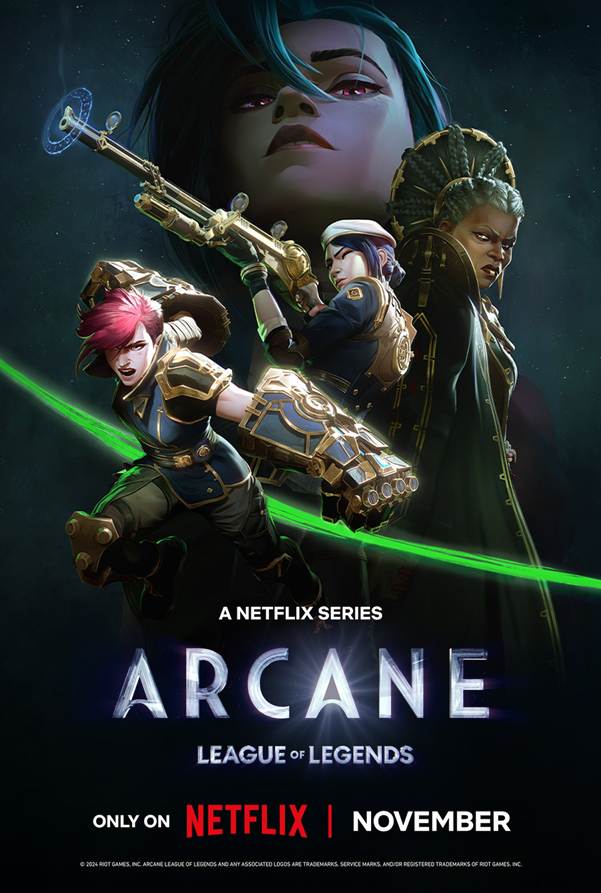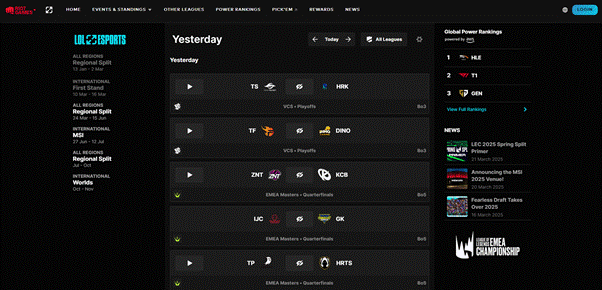Esports has rapidly transformed from grassroots gaming tournaments into arena-filling spectacles. Few companies have played a bigger part in that transformation than Riot Games. The studio has carved a remarkable path by turning League of Legends into a global phenomenon, bringing top-level competition and top-tier production values together under one umbrella.
However, everyone is wondering how Riot continues to sustain its competitive scene without losing momentum. The short answer lies in a carefully considered business model backed by a commitment to audience engagement and strategic collaborations.
The Vision Behind an Esports Ecosystem
Riot understood early on that esports should be more than an occasional gaming event. Instead of treating it as a promotional tactic for a single title, they focused on crafting a year-round spectacle that draws in viewers from every corner of the globe. The approach hinges on a sense of belonging for competitors, fans, and brand partners. By creating structured leagues and clearly defined seasons, Riot encouraged a loyal following that returns weekly, much like traditional sports fans tuning in for football or basketball games.
Many industry watchers took notice when major media outlets started reporting on League of Legends tournaments exceeding conventional sports broadcasts in viewer numbers. According to Forbes, the game’s flagship tournaments often attract millions of concurrent viewers. This steady surge in popularity didn’t come about by accident. Riot has worked tirelessly to ensure that tournaments remain visually stunning, balanced, and inviting to longtime players and newcomers alike.
Franchising and Partnerships Business Structure

The bedrock of Riot’s plan involves a franchising model for regional leagues. By allowing esports organizations to buy permanent spots in leagues like the LEC (Europe) and LCS (North America), Riot fosters stability for both teams and sponsors. These franchised spots allow organizations to invest in training facilities and talent development without worrying about immediate relegation wiping out their place in the league. That permanence builds trust with sponsors, who see a genuine opportunity for returns on investment over multiple seasons.
Beyond franchising, Riot has also pursued strong partnerships with prominent brands. Deals with apparel and automotive companies have brought mainstream appeal to its broadcasts. This broadens the audience beyond the core gaming crowd, tapping into new demographics with limited knowledge of esports. Viewers tune in for gameplay and these partnerships’ cultural elements: fashionable team gear, immersive broadcast segments, or interactive fan experiences.
Revenue Streams for a Lasting Model

One of the most striking aspects of Riot’s method is the mixture of income sources they’ve woven together. It’s no longer just about viewership numbers. Several revenue streams bolster the competitive scene:
- Media Rights: Streaming deals on platforms like Twitch and YouTube, alongside exclusive broadcasts in certain regions, create a dependable revenue base.
- Sponsorship and Advertising: Product placements, branded segments, and sponsor highlights during matches keep money flowing into prize pools and league operations.
- Team Partnerships: As previously noted, franchised leagues allow organizations and Riot to share revenue, ensuring all parties are directly interested in growing the league’s popularity.
- Digital Goods: Special esports-themed in-game items or passes let viewers directly support their favorite teams and events. This approach ties fandom to funding in a simple, effective way.
- Ticket Sales and Merchandising: Fans can purchase tickets, team jerseys, and collectibles at live events, from smaller regional finals to colossal world championships.
This diversified system provides resilience. If one area encounters a temporary slump, others can keep the ecosystem afloat. It also builds an environment where teams, sponsors, and Riot all benefit from the league’s visibility.
Integrity and Community Involvement

A game can’t thrive without the trust of those who play and watch it. Riot invests heavily in maintaining fair competition with frequent balance updates, active moderation, and clear rules on player conduct. Misconduct, whether cheating or match-fixing, is met with swift action. This dedication to integrity has earned goodwill across the esports community, boosting the credibility of official tournaments.
Interaction with fans is equally vital. Regular behind-the-scenes content, interviews, and interactive chat features make viewers feel part of the story. The official LoL Esports website showcases live matches, detailed player profiles, and highlight reels to keep everyone in the loop. Riot also encourages watch parties and local viewing events to keep the energy high, even for those who aren’t at the live venue.
Broadening Horizons

Riot’s success story started with League of Legends but didn’t end there. Titles like Valorant and Teamfight Tactics have emerged under the same umbrella, opening new competitive frontiers. Each has its dedicated tournaments, with distinctive rulesets and fanbases.
Valorant, in particular, has gained attention for its blend of tactical gunplay and specialized character abilities, an approach that speaks to shooters and strategic gameplay fans. This popularity has also led to a cottage industry around Valorant account trading, where players seek help climbing competitive ranks. Many websites and independent businesses profit from these services and products, illustrating how a successful title creates opportunities beyond the official tournament circuit.
Riot spreads the risk by extending beyond a single title while reaching new audiences. Esports fans who might not connect with the highly strategic nature of League of Legends could easily latch onto the more fast-paced style of Valorant. That cross-pollination between player communities reinforces brand loyalty, pulling more viewers into the Riot ecosystem as a whole.
How Are Gamers Like Us Getting Involved

Curious about the latest in professional gaming? Head over to the LoL Esports schedule to see what’s on the horizon, then pick a match to watch and experience the hype firsthand. If you prefer hands-on participation, explore your local gaming scene for amateur events and meetups. You might discover a passion for everything from strategizing with teammates to cheering on pros from halfway around the world.
Want a broader perspective on esports marketing trends? Check out our own in-depth overview for ideas on how businesses are connecting with new communities. Whether you’re a casual fan or a potential sponsor, there’s plenty to learn from Riot’s track record of blending entertainment with financial savvy.
Looking Ahead
Riot’s esports framework hasn’t remained static. Each year, they refine everything from broadcast formats to partnership opportunities. By listening to feedback and reacting quickly to changes in audience tastes, they stays ahead in a fast-moving industry. That adaptability suggests Riot’s leagues will continue to flourish for the foreseeable future.
When you look at this model, you see more than just gaming competitions. You see a case study of gathering fans around a digital product, designing a stable revenue infrastructure, and nurturing a passionate, worldwide community. Other organizations are already taking notes, which promises more opportunities for audiences and teams everywhere.
